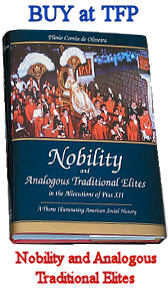Stephen Langton
Cardinal and Archbishop of Canterbury, b. in the latter half of the twelfth century; d. at Slindon Manor, Sussex, July 9, 1228. Although the roll of English churchmen has few names more illustrious, Langton’s fame is hardly equal to his achievements. Even among his own countrymen too few have an adequate knowledge of his merits and of his great services to his country and to the Catholic Church, although his labors were concerned with the two things specially dear to Englishmen, the Bible and the British Constitution. Little though they may think it, every one who reads the Bible or enjoys the benefit of civic freedom owes a deep debt of gratitude to this Catholic cardinal. If men may be measured by the magnitude of the work they accomplish, it may be safely said that Langton was the greatest Englishman who ever sat in the chair of St. Augustine. For Anselm was not an Englishman, and his triumphs were won in fields of thought and politics of less interest to Englishmen. Some churchmen, again, have been great as writers and thinkers, others as statesmen solicitous for the welfare of the whole people, and others as zealous pastors of their flock. It was Langton’s lot to win distinction in all three capacities, as scholar, statesman, and archbishop.
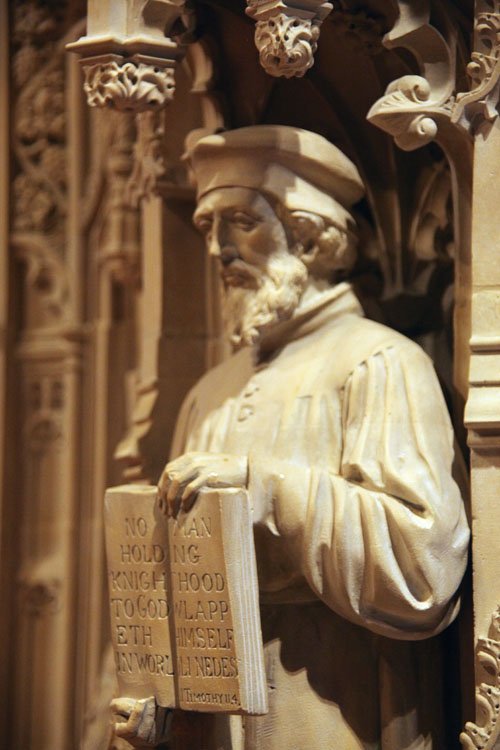
Closeup of Cardinal Stephen Langton statue on the Canterbury Pulpit at Washington National Cathedral in Washington, D.C. Photo by Tim Evanson.
The Scholar.—The literary activity of Langton belongs to the earlier part of his life, and it is as a scholar that he first appears in history. Of his boyhood we have no details, both the date and place of his birth being matters of inference and conjecture. From the circumstances attending his election to the primatial See of Canterbury it is evident that he was an Englishman. His name itself is clearly taken from some English town, but it is not certain which of the several places so-called had the honor of giving its name to the family of the cardinal, though Mark Pattison confidently asserts that he “is known by the surname of Langton from the place of his birth, Langton near Spilsby in Lincolnshire” (op. cit. in bibliography). His father was Henry de Langton; his brother Simon de Langton—presumably his junior, seeing that he survived the archbishop twenty years—was Archdeacon of Canterbury, and took an active part in the ecclesiastical and political struggles of the time. There does not seem to be any evidence of kinship between the archbishop and John Langton, Bishop of Chichester in the following century. Stephen’s birth may be fixed approximately by the known dates of his election (1205) and his death (1228). For, since he was already famous as a scholar and had become cardinal before the former date, he can hardly have been then a mere youth, while the fact that he lived for another twenty years and more, and was engaged in active work until his death, would seem to show that he was yet in the prime of life when he was elected archbishop. His birth, therefore, could not fall very much before or after 1160 or 1170. On the same grounds it may be gathered that Langton went to the University of Paris at an early age, for it was his fame as a teacher of theology that led Innocent III to summon him to Rome and create him cardinal. This act of the great pope and the store he set by Langton’s learning may remind us how one of his predecessors wished in like manner to avail himself of the services of the Venerable Bede—another great Englishman, with whom Langton had much in common in the character of his learning and in his indefatigable industry as a commentator on Holy Scripture. Thus Pattison naturally mentions the name of Bede in his graphic description of Langton as “that great prelate, who, during a twenty-three years occupation of the See of Canterbury, acted in public a most prominent part in national affairs, and in the cloister produced more works for the instruction of his flock, than any who, before or since him, have been seated in that `Papal chair of the North ‘—who was the soul of that powerful confederacy who took the crown from the head of the successor of the Conqueror,—and yet, next to Bede, the most voluminous and original commentator on the Scripture this country has produced—and who has transmitted to us an enduring memorial of himself in three most different institutions, which after the lapse of six centuries are still in force and value among us—Magna Charta, the division of the Bible into chapters, and those constitutions which open the series, and form the basis, of that Canon Law which is still binding in our Ecclesiastical Courts” (ibid.).
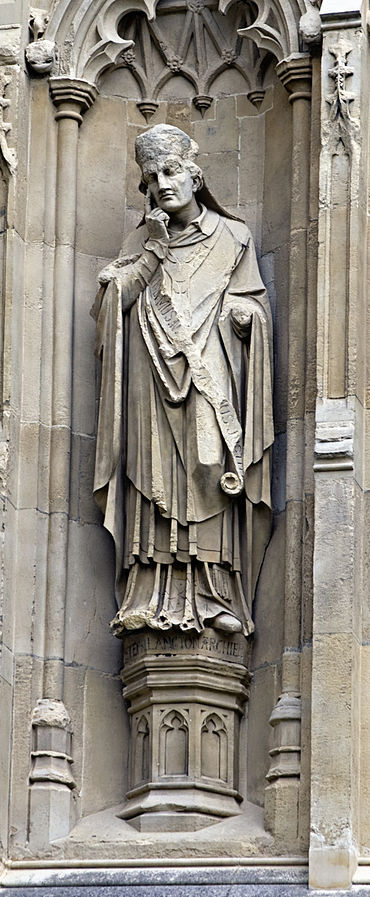
Statue of Stephen Langton, Archbishop of Canterbury, from the exterior of Canterbury Cathedral. Photo by Ealdgyth.
In this passage Pattison has incidentally touched on the chief and most enduring result of Langton’s industrious scholarship, the division of the Bible into chapters—or, in the quaint words of an old chronicler (Trevisa’s translation of Higden’s “Polychronicon”), “he toted the Bible at Parys and marked the chapitres”. This statement has been confirmed by recent researches of Denifle (see Kaulen, “Einleitung in d. Heil. Schrift”), which prove clearly that the division of the Sacred Text into chapters owes its origin to Stephen Langton. The importance of this work may be sufficiently gauged by its widespread adoption, for this division into chapters has not only passed from the Vulgate to all modern vernacular versions of the Bible, but has been applied with obvious advantage to the Greek New Testament and to the Septuagint. It is indeed one of the few cases in which Latin scholarship has affected the Eastern Churches. Yet more remarkable is it that the division has also been adopted by the Jews themselves, and that the hand of the English cardinal should leave its mark on the pages of the Talmud. While not abandoning their own system of division, the Jews saw the advantage of the Langtonian chapters, which are constantly used for purposes of reference even in purely Rabbinical literature, as may be seen in the Warsaw editions of the Talmud Babli and Midrash Rabba. The value of this change is practically illustrated in Ceriani’s facsimile edition of the Milanese Codex Syro-Peschitto, where the divisions wanting in the text are marked in the margin by the editor. The division into chapters has sometimes been ascribed to Cardinal Hugh of St-Cher, but his task was to subdivide Langton’s chapters into seven parts marked by the first seven letters of the alphabet. This method, used by old commentators and still surviving in our liturgical books, has for general purposes been superseded by the division into verses which we owe to Robert Estienne.
Although few of Langton’s original writings or commentaries on Holy Writ are known to students of the present day, Lingard is hardly warranted in stating bluntly that “his writings have perished”. Many of his voluminous works still happily survive in manuscripts, the number of which indicates the popularity his writings once enjoyed. Some of his letters have been printed by D’Achery in his “Spicilegium”; his tractate on the translation of St. Thomas of Canterbury is published by Dr. Giles in the second volume of his valuable edition of the life and letters of the blessed martyr, and, though slight, is sufficient to give the reader some notion of Langton’s Latin style. For the rest, it should be remembered that, though his commentaries are no longer read, the Biblical student of the present day still benefits by them at least indirectly, since here, as in other fields of sacred science, the scholars of each age build on the work left by those who went before them, and commentaries that were once in the hands of all must have had some influence on the later works by which they were eventually superseded.
Veni Sancte Spiritus, sometimes called the “Golden Sequence,” is a sequence prescribed in the Roman Liturgy for the Masses of Pentecost and its octave, exclusive of the following Sunday. It is believed that Cardinal Stephen Langton is the author.
The Statesman.—If Stephen Langton had spent the rest of his days in Rome, his great services as a scholar would give us good reason to regard him with reverence, and we might have doubted whether the studious cardinal were likely to accomplish much in the world of action and ecclesiastical administration. It was undoubtedly a severe ordeal to pass from a life of study to the anxious responsibilities of a primatial see and that struggle with kings and princes which was too often the lot of bishops in those days. Called to fill the See of Canterbury while the memory of Anselm’s banishment and Becket’s martyrdom was yet fresh in men’s minds, Langton’s case was at the outset worse than that of his two great predecessors, for, however much they had later to suffer, they were at least allowed to begin with some semblance of peace and of royal favor. Appointed to the see in the midst of a strenuous struggle and in direct opposition to the king’s wishes, Langton had to begin his episcopate with a long period of banishment. This quarrel, in full force before Langton’s name was suggested, has been graphically told by Lingard, following in the wake of Roger de Wendover and other old chroniclers. A dispute had arisen as to the right to elect the Archbishop of Canterbury, which was claimed both by the monks of the cathedral chapter and by the bishops of the province. On the death of Archbishop Hubert Walter in 1205, some of the younger monks attempted to steal a march on the opposite party by the nocturnal and surreptitious election of Reginald, their sub-prior, who was forthwith sent to Rome to seek confirmation at the hands of Innocent III. It appears to have been their original plan that the proceedings should be kept secret until the candidate’s arrival in Rome. Certainly there was little likelihood that the king would have suffered him to go free if the object of the journey had been known. His vanity, however, induced Reginald, when safe out of John’s dominions, to lay aside all disguise and assume the style of archbishop elect. The angry king lost no time in compelling the monks at Canterbury to hold another election and to place on the archiepiscopal throne his own favorite and prime minister, John de Gray, Bishop of Norwich.
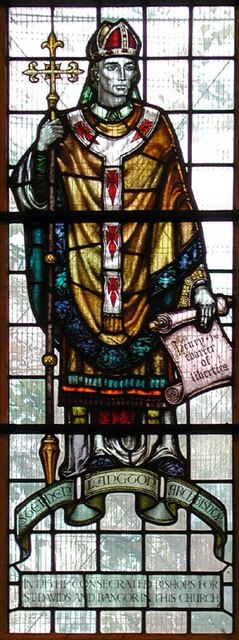
Stained glass window in St Mary’s parish church, Staines, Middlesex (now Surrey). Photo by John Salmon.
A new delegation was then dispatched to Rome to ask the confirmation of this second election, and the pope had to decide between the claims of the rival candidates. On different but equally satisfactory grounds he rejected both elections. The first was void by reason of its irregular and surreptitious character, while, even apart from the pressure which robbed the second election of the necessary freedom, it was irregular because the first had not yet been annulled in a regular and canonical manner. On the question at issue between the monks and the bishops he decided in favor of the former, as the evidence showed that the right of election had belonged to them from Saxon times. And, as the field was now clear for a fresh election, he directed the monks then in Rome to choose a new archbishop, and recommended Langton as one well worthy of this office. This choice was duly made and confirmed by the pope, who made it known to the king in a letter warmly praising the merits of the new archbishop, while in a Bull to the prior and monks of Canterbury he called him “Our beloved son, master Stephen de Langton, a man verily endowed with life, fame, knowledge, and doctrine”. But neither the words of Innocent nor the merits of Langton could satisfy the angry king, who wreaked his vengeance on the Church of Canterbury and vowed that Langton should never set foot in his dominions. Thus began the memorable struggle between the worst of English kings and the greatest of the medieval pontiffs. Finding John deaf to reason and remonstrance, Innocent proceeded to take stronger measures, and placed the kingdom under an interdict. It seemed as if even this strong measure would be of no avail, for John remained obstinate for eight years.
At length, when Innocent proceeded to pronounce him excommunicate, and his powerful rival Philip of France was preparing to carry out the sentence of deposition, John, alarmed at the growing disaffection of his own subjects and recognizing that further resistance was unavailing, consented to open negotiations with the archbishop. Langton, who had done his best to guide and govern his flock from his place of banishment, was thus able to land once more in England. The king had in 1209 invited Langton to meet him in England, and had sent him a safe conduct for that purpose. But, as this was addressed not to the Archbishop of Canterbury but to “Stephen Langton, cardinal of the Roman see”, the archbishop firmly refused to accept it. Another invitation in 1210 proved equally ineffectual, but, when John at length yielded in his hour of danger and issued letters in due form, Langton lost no time in returning. He landed at Dover in July, 1213, and was met there by the king, who fell at his feet with words of welcome and submission. John had already on May 15, 1213, resigned his kingdom to Pandulph, the pope’s legate, and had received it back as a fief of the Holy See. It might have seemed that the long struggle was now over, and that the archbishop, after his eight years of banishment, could at length enter on a peaceful period of pastoral labor. But it is not likely that Langton himself cherished this illusion. The king’s apparent surrender to the pope had indeed changed the issue, and had gained its object of frustrating the schemes of the French King, since, as a vassal of the Holy See; John could now appeal to the pope for protection. But it still remained to be seen whether John would fulfils his promises, and whether, by ruling with justice, he would conciliate his disaffected subjects. The course he had taken since his submission to Pandulph gave ground for grave misgivings, and events soon showed there was as yet no room for peace.
But the conflict between John and Innocent was now to be succeeded by the momentous struggle between the king and his barons. And, though Langton’s appointment as primate had been the chief issue in the former strife, his part in the constitutional conflict, while not less conspicuous, was more active and commanding, for, in the words of Pattison, he was the “soul of the movement”. This appears from his strong action at the meeting held at St. Paul’s in London on August 25, 1213. “Its ostensible object”, says Lingard “was to ascertain the damages sustained by the outlaws in the late quarrel. But Langton called the barons aside, read to them the charter of Henry, and commented on its provisions. They answered by loud acclamations, and the archbishop, taking advantage of their enthusiasm, administered to them an oath by which they bound themselves to each other to conquer or die in the defense of their liberties.” When the king was going to wreak vengeance on the barons for their disobedience, Langton firmly insisted on their right to a lawful trial, and added that, if John refused them this justice, he would deem it his duty to excommunicate all, except the king himself, who took part in this impious warfare. Such was the archbishop’s vigorous line of action at the outset of the struggle which was brought to a successful issue two years later by the signing of the Great Charter at Runnymede. And, if he was the soul of the movement which led to these results, he may justly be regarded as the real author of the Magna Charta.

Plaster maquette of Stephen Langton by w:John Thomas (sculptor). One of 17 maquettes for life-sized bronzes representing the signatories of the Magna Carta. The bronzes decorate the walls of the Lords Chamber at Westminster Palace, London. As of 2013 this plaster maquette is in the Canterbury Heritage Museum, and the rest are unavailable to the public in Westgate Towers, Canterbury. Photo by Linda Spashett Storye book.
It is important to observe that in this constitutional conflict Langton was laboring for the liberties of England and seeking to check the royal tyranny, which was the chief danger to the Catholic Church in that country, and which in a later age was to be one of the main factors in bringing about the separation between England and the Holy See. In this war he was a bishop fighting for the Church, as well as an English man fighting for the liberty of his country. It must, however, be remembered that many issues were involved in the struggle. There were dangers of excess on either side. Nobles as well as kings have been guilty of oppression and injustice, and the common people often suffer more from many tyrants than from one. Bearing this in mind, we can understand how some may have regarded the struggle from a different standpoint. The pope, naturally more in sympathy with authority than with those in apparent rebellion against it, bound moreover by duty and interest to care for the rights of his vassal, and assailed with reports from the king’s side and misrepresentations of the archbishop, might clearly be expected to take a different course from Langton. Thus we find him remonstrating with the primate and the barons, declaring the confederacy void, annulling the Great Charter, and bidding the archbishop excommunicate the disturbers of the kingdom. When Langton, though consenting to one general issue of the sentence, refused to repeat the excommunication—partly on the ground that it was issued under a misapprehension, and partly because he wished first to see the pope himself—he was rebuked and suspended from his office. This sentence came to him on his way to Rome to attend the Fourth Lateran Council, and it was confirmed by the pope himself on November 4, 1215. In the following spring Langton was absolved, but was required to remain in Rome until peace was restored. This gave him a brief rest after all his struggles, and in 1218, when both Innocent and John were dead and all parties in England were united under Henry III, he returned to his see.
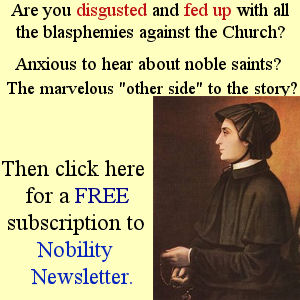 The Archbishop.—After his return from Rome in 1218 Langton devoted the closing ten years of his episcopate to peaceful and fruitful pastoral labor. It might be thought that there was little scope here for any great achievements comparable to his earlier work as a scholar and a statesman, and that there would be little to distinguish his life in this time of peace from that of other Catholic prelates. One who had already labored and suffered so much might well have been pardoned for leaving to younger and more fortunate successors any large works of reform. Yet he has left his mark on the history of Canterbury See by his code of forty-two canons published in a provincial synod. To quote the emphatic words of a recent biographer. “On Sunday, April 17, 1222, Stephen opened a church council at Osney which is to the ecclesiastical history of England what the assembly at Runnymede is to her secular history” (Norgate, loc. cit. infra).
The Archbishop.—After his return from Rome in 1218 Langton devoted the closing ten years of his episcopate to peaceful and fruitful pastoral labor. It might be thought that there was little scope here for any great achievements comparable to his earlier work as a scholar and a statesman, and that there would be little to distinguish his life in this time of peace from that of other Catholic prelates. One who had already labored and suffered so much might well have been pardoned for leaving to younger and more fortunate successors any large works of reform. Yet he has left his mark on the history of Canterbury See by his code of forty-two canons published in a provincial synod. To quote the emphatic words of a recent biographer. “On Sunday, April 17, 1222, Stephen opened a church council at Osney which is to the ecclesiastical history of England what the assembly at Runnymede is to her secular history” (Norgate, loc. cit. infra).
W. H. Kent (Catholic Encyclopedia)



